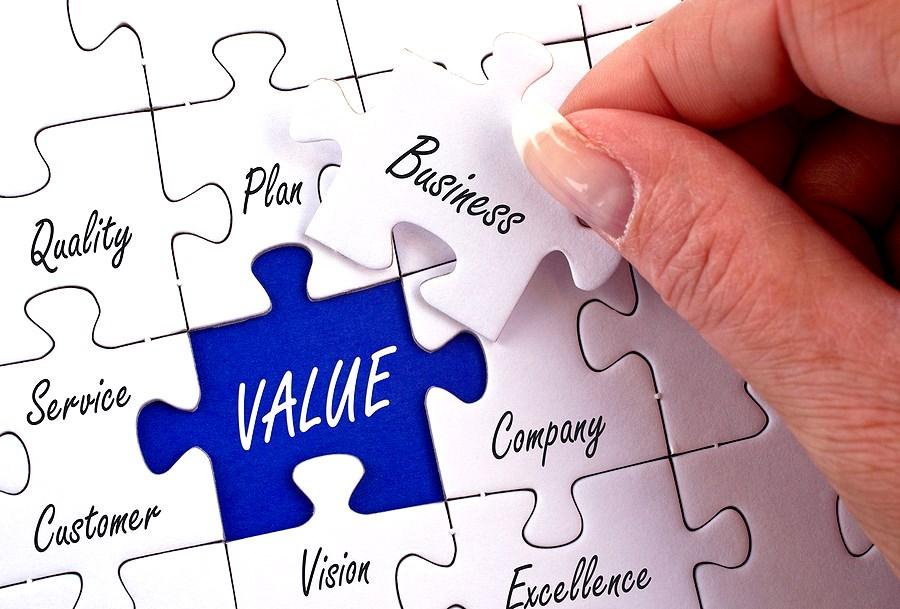


























 Robert T. Yokl
Robert T. Yokl





























 Robert T. Yokl
Robert T. Yokl

We have all dealt with the school of hard knocks, but I always try to look at these instances as great learning and knowledge building exercises to propel me forward. These are things I have run into over my decades in the business and are also examples from seeing clients and colleagues befallen to the school of hard knocks. Since nobody likes to talk about their mistakes or miscues, I thought I would talk about the lessons learned from each of these that I continue to see to this day.
1. Not All Data Is Created Equal – Everything is data driven in the cost/value optimization world so it is mission critical that you set yourself up with a consistent flow of data that will help you create the best savings and quality outcomes. One of the reasons that companies like SVAH Solutions can do more and create more value with your own data is that we set up separate databases, queries, and reports with your data to enhance it. Why? Because as much as you rely on your ERP/purchasing system for your own reporting and transactions, it is usually not correct when it comes to things like categorization of all your products and services.
The only way to ensure that your ERP data is correct is to set up parallel data warehouses that don’t change your data in any way but allow you to add detailed categorization in order to perform more value analytics and reporting with it.
2. Most Healthcare Professionals Don’t Like Benchmarks - I cannot tell you how many times I have presented cohort benchmarks for hospitals and health systems alike that were scientifically and artfully compiled but were brushed away because they just didn’t like benchmarks, even though these numbers pointed directly to major savings opportunities. Too often, the benchmarks were not taken seriously because the leaders they were presented to simply did not like cohort benchmarks.
Many organizations feel like they are unique and should not be compared to other healthcare organizations as they are “different”. The reality is that 80% to 90% of the time they are not different and can be benchmarked with other organizations. There are strategies to gain buy-in on your cohort benchmark reporting which we have implemented by not just providing one group of cohort benchmarks but hitting the benchmarks and KPIs from three to four different angles. This left no doubt of the original cohort benchmark when all three or four key performance indicators were showing the same outcome.
3. Price Thinking Still Lives Today – Price is King in the healthcare and business world. Supply chain organizations are continually looking for a better price and are always actively converting whole categories of products and services if it means gaining a price advantage. You can add standardization of vendors to the mix and even standardization of products within the vendor’ s product line if that makes for bigger savings. These are all price related strategies, but they are not the only strategies that can be employed to save big. If you don’t engage in strategies beyond price, then you won’t be finding and attaining any major savings beyond price. Don’t fall into this trap when you can also focus on areas like waste, inefficient use, consumption management, and much more.
4. GPOs Are the Supply Chain Formulary – The dedication to group purchasing organizations is still at a high level and I don’t see that changing. During a meeting with my son and business partner, Robert W. Yokl, we agreed that health systems are using GPOs as their “formulary” for their supply chain and purchased service sourcing. The term “formulary” which is predominant in pharmacy purchasing is a set group of drugs that hospitals and health systems will use at their organization to maintain patient outcomes and be good financial stewards (e.g., think changing over from brand name drug to generic alternative). This is no different than what is happening in supply chain where the GPOs have taken over the role of contract formulary builders with options for their members.
Without GPOs, hospitals would have to deal with much more than just added labor to manage all of the contracts that would not be on a GPO contract. This would be almost impossible without major staffing increases that organizations cannot afford. The bottom line is that GPOs are now filling the role of Supply Chain Formulary and allowing their members to customize within the confines of the larger contract scope.
5. Trust but Verify – If you have read any of my articles over the past few decades, you may have noticed a common theme which is the human aspect of the healthcare supply chain and value analysis world. You may have the biggest, juiciest, and most robust savings opportunity all spelled out and tied in a nice ribbon, but it will be brushed away with a few words of contrasting views from your key customers/stakeholders. At that point, you have a choice. You can either accept what they are saying, or you can go and verify their statements such as, “We were busier the past few months in Cath Lab,” or, “ICU’s acuity was through the roof which required more supplies.” Whatever you are recommending, there will be an excuse from your end customers as to why it is not valid. We cannot just let them lip service away a viable savings opportunity in our current environment. We must validate their reasons for the cost increase. Eighty percent of the time they will not be right with their knee jerk reaction, but 20% of the time they will be. So, we verify it all.
I am glad I could share some of these valuable strategies with you that I had to learn through the school of hard knocks. No one ever wants to make mistakes but sometimes they are necessary learning tools and building blocks that you cannot learn in a classroom which is why I have pointed these out to you today. These lessons will no doubt help you work towards achieving major savings and quality results moving forward.

 By Robert W. Yokl, Sr. VP, Supply Chain & Value Analysis SVAH Solutions
By Robert W. Yokl, Sr. VP, Supply Chain & Value Analysis SVAH Solutions
Many health systems throughout the country are feeling the financial pinch due to inflation, reduced reimbursements, and the increased contract labor costs. Organizations are dealing with this in several manners with things like budget cutbacks, hiring freezes, and even layoffs. But organizations cannot sustain operations on these one-time events year after year and will need to look for sustainable solutions to further optimize costs at every level without affecting quality of care.


The good news is that there are still more savings to be had at healthcare organizations, but we are going to need to drill a little deeper into our non-salary expenses in order to identify and weed out unfavorable cost drivers. This is easier said than done, but not impossible. Below are a few strategies which my firm, SVAH Solutions, has been utilizing to identify savings for our clients.
Consumption Management
Reporting –
My staff utilizes year over year reporting that is aligned with patient volume metrics to report out all of the categories that are running over in descending dollar from the previous year. Believe me, this and this alone will bare multitudes of savings opportunities that will keep you busy with major savings for the next two years guaranteed. Many people who are price-focused think that all you need to do is get the right pricing and terms, but today it is all about how much you consume on the nursing floors, in the OR, lab, ED, etc. The savings are there, but you have to have some form of reporting other than spend reports to make them visible to you.
Retrospective Value Analysis Reviews – It does not matter if you are a large health system or one community hospital - if you drill down into any major cost category to look for lower cost alternatives or where there is waste and inefficient use, you will find it. Make a little room on your value analysis agendas for these types of VA studies and you will find big savings just about every time.
Every time you are renewing a contract with a major vendor, take a deep dive into your utilization and consumption of products and weed out high-cost products wherever possible. Most organizations never delve further than the new pricing as compared to the previous contract, but if you take a step further and work with your VA team you can find some great savings.


“All will be better served with a value analysis study being performed to find the lowest cost, functionally equivalent alternative that meets the clinical requirements reliably.”
Just because you find a nice juicy savings opportunity does not automatically mean that you are going to achieve the savings. You need to find just the right avenue that will give you the full savings amount or more. You may think that if you find out that you’re using a Rolls Royce IV catheter that you could simply have your contract manager work with your nursing team to pick a lower cost catheter, but think again. I would recommend that you turn this over to your clinical value analysis team because they will use their value analysis functional approach to work with the various nurse stakeholders in order to find the lower cost, best value IV catheter.
A simple rule is that if something is house-wide or clinical in nature, all will be better served with a full-blown value analysis study being performed to find the lowest cost, functionally equivalent alternative that meets the clinical requirements reliably.
When things happen like cost cutbacks at healthcare organizations, it is easy to just stay in our lanes and do what we are asked to do and not stick our necks out to try to make things like cost management happen. Senior leadership often will jump in when there is a financial pinch but that may just result in outside consultants being brought in and inevitably affecting your department and work areas. I highly recommend that you actively step up your own savings game with the above valuable strategies that can help your organization reap major savings not only this year but for years to come.

J. Hudson Garrett Jr., Ph.D., MSN, MPH, MBA, FNP-BC, IP-BC, PLNC, VA-BC, BC-MSLcert MSL-BC, CPHRM, LTC-CIP, CPPS, CPHQ, CVAHPTM, CMRP, CPXP, CDIPC, FACDONA, FAAPM, FAOM, FACHDM, FNAP, FACHE, FSHEA, FIDSA, FAHVAP
Karen Niven, MS, BSN, RN, CVAHPTM, FACHDM, FNAP, FAHVAP


To comprehensively explore the significance of professional accountability in the specialized role of a Healthcare Value Analysis Leader, it's essential to delve deeper into the facets of this responsibility, especially considering the Association of Healthcare Value Analysis Professionals (AHVAP)'s new position statement. This comprehensive stance underscores the profound impact that professional accountability in the value analysis specialty has on healthcare outcomes, cost management, and the ethical landscape of healthcare provision.
Professional accountability in healthcare transcends mere adherence to job descriptions or organizational policies. It embodies a personal and collective commitment to upholding the highest


standards of integrity and excellence in every action and decision. For Healthcare Value Analysis Leaders, this commitment is manifested in several core areas:
• Ethical Decision-Making: Navigating the complex interplay of cost, quality, and patient outcomes requires a steadfast ethical compass rooted in knowledge of both evidence-based practices and professional standards of care. Leaders must evaluate products and services not only for their financial impact but also for their potential to enhance or compromise patient care. This ethical scrutiny ensures that the welfare of patients remains at the forefront of value analysis efforts.
• Evidence-Based Practices: The foundation of value analysis lies in evidence-based decisionmaking. This involves a rigorous assessment of clinical data, product safety, efficacy, and overall impact on patient care and organizational efficiency. By grounding decisions in evidence, Healthcare Value Analysis Leaders can advocate for solutions that genuinely improve care quality and patient outcomes while ensuring fiscal responsibility.
• Stakeholder Engagement: Professional accountability also extends to the manner in which Healthcare Value Analysis Leaders engage with stakeholders across the healthcare spectrum. This includes fostering transparent, collaborative relationships with clinicians, administrators, patients, and suppliers. By involving these stakeholders in the value analysis process, leaders can ensure that decisions are informed, balanced, and reflective of diverse perspectives and needs.
The AHVAP's position statement on the specialty of healthcare value analysis marks a significant milestone in defining the professional standards and expectations for practitioners in this field and establishes value analysis as a specialty within healthcare. It serves not only as a guide for current professionals but also as a benchmark for the development and recognition of healthcare value analysis as a specialized discipline.
CoreComponentsofthenewAHVAP PositionStatementinclude:
Professional Competence and Development: It emphasizes the importance of continuous professional development to keep abreast of the latest clinical, technological, and policy advancements. This commitment to lifelong learning is vital for maintaining the competence necessary to make informed value analysis decisions. Healthcare Value Analysis Leaders must own their own professional development and not be solely reliant upon employer sponsorship or direction.
Ethical Standards and Integrity: The position statement places a strong emphasis on ethics and integrity, which must be applied across the entire value analysis process. Healthcare Value Analysis Leaders are called upon to navigate the complexities of healthcare delivery with a clear ethical
framework, ensuring that every decision is made with consideration for its impact on patient care and organizational integrity.
Collaboration and Communication: Recognizing the interdisciplinary nature of healthcare, the position statement underscores the importance of effective collaboration and communication. Value Analysis Leaders must work closely with clinical teams, supply chain professionals, and organizational leadership to ensure that value analysis initiatives are aligned with broader healthcare goals and strategies.
Innovation and Strategic Thinking: The rapidly evolving healthcare landscape demands that Healthcare Value Analysis Leaders not only respond to immediate challenges but also anticipate future trends and innovations. The position statement encourages leaders to adopt a forward-thinking approach, exploring new technologies, methodologies, and models of care that can drive improvements in healthcare delivery.


“The principles outlined in AHVAP’s position statement reflect a broader commitment to excellence, ethics, and patient-centered care.”
The principles outlined in AHVAP's position statement extend beyond the immediate scope of value analysis. They reflect a broader commitment to excellence, ethics, and patient-centered care that is critical to the success and sustainability of healthcare organizations. By embodying these principles, Healthcare Value Analysis Leaders can contribute to a culture of accountability that permeates every level of the healthcare system.
Professional accountability ensures that decisions are not just economically sound but also ethically defensible and clinically beneficial to our patients that we are charged with serving. It fosters an environment where transparency, collaboration, and innovation are not just encouraged but expected across all stakeholders. In this context, the Healthcare Value Analysis Leader becomes a pivotal figure in driving organizational change, improving patient outcomes, and ensuring the ethical stewardship of healthcare resources across the entire healthcare continuum of care.
The value of professional accountability in the realm of healthcare value analysis cannot be overstated. It is a fundamental principle that guides Healthcare Value Analysis Leaders in their mission to balance cost, quality, and outcomes in a manner that supports patient care and organizational goals. AHVAP's new position statement on healthcare value analysis further solidifies
the importance of this role and sets a high standard for professional practice. Healthcare leaders at the health system level should invest in building competencies in Healthcare Value Analysis Leaders, utilizing the AHVAP-defined professional competencies as a guide for training, development, and mentorship.

As healthcare continues to face unprecedented challenges and opportunities, the principles of professional accountability will remain a beacon, guiding Healthcare Value Analysis Leaders in their quest to deliver value-based care.

Through ethical conduct, evidence-based decision-making, continuous quality improvement, and stakeholder engagement, these leaders play a crucial role in shaping the future of healthcare a future where value, quality, and patient care are inextricably linked.
Professional Associations such as AHVAP are leading the charge in building a tapestry of professional tools, resources, and professional development opportunities for Healthcare Value Analysis Leaders and professionals.



Dr. Garrett is the Executive Director and Executive Vice President for the Association of Healthcare Value Analysis Professionals (AHVAP) and an Adjunct Assistant Professor of Medicine in the Division of Infectious Diseases at the University of Louisville School of Medicine.

Karen Niven is the Senior Director of Clinical Value Analysis at Premier, Inc. and serves as the President-Elect for the Association of Healthcare Value Analysis Professionals (AHVAP).



Anne Marie Orlando, RN, MBA, RCIS, CVAHP, Senior Director, Clinical Programs at Blue.Point Supply Chain Solutions; Treasurer, Association of Healthcare Value Analysis Professionals


In the ever-evolving healthcare landscape, the procurement of medical products and devices stands at a critical juncture where decisions can significantly impact patient care and overall healthcare efficiency. While cost considerations often take center stage, it is essential to recognize and prioritize a product’s clinical features. Choosing based on price alone may compromise muchneeded basic functionalities, leading to suboptimal performance and potentially jeopardizing patient care.
A well-designed product with intuitive clinical features allows clinicians to focus on what matters most direct patient care. Products with additional clinical features may come with a higher upfront cost, yet the total cost of ownership over its lifespan can be significantly lower. When presenting a product to the value analysis committee for approval, it is imperative to understand what pain point this product addresses. Is it a patient safety issue, clinical efficiency, standard or guideline requirement? Once the purpose is identified, can you quantify this in numbers such as number of minutes saved per case?
The need for cost savings is undeniable, especially with decreasing operating margins. However, the value of a medical product lies not just in its initial price tag but in its sustained performance and longevity. Stakeholders and decision-makers must clearly identify their desired outcomes. It is a balancing act between clinical features and desired results.
A product chosen solely based on its lower price may lack the necessary functionalities, potentially hindering clinical and operational efficiency and detracting from the overall quality of patient care. Does the product take more time to assemble? Do clinicians need to replace the device more often? Do clinicians need additional support to operationalize? These questions must be answered during the value analysis process.
Should we ignore pricing altogether? Absolutely not. Clinicians and stakeholders must discern whether the additional cost of the clinical features genuinely adds value to patient care, outcomes, and efficiencies, or adds cost. Investing in certain clinical features becomes a strategic decision beyond immediate financial considerations, ensuring a sustained and reliable contribution to patient
care and healthcare efficiency. Think of central lines. Years ago, these devices were not kitted with all of the items needed to prep, insert, and dress the line. Clinicians gathered these items separately. This practice may have come at a lower financial cost but led to a higher clinical cost due to the variation of products, subsequent outcomes, and inefficiencies of the gathering process. All of this must be taken into consideration.
The importance of prioritizing clinical features over price in healthcare procurement must be recognized. By understanding the intrinsic value of a product’s clinical functionalities, decision-makers pave the way for a healthcare system that is more efficient and patient-centered. As we navigate the complexities of modern healthcare, let us shift our focus from the price tag to the invaluable clinical features that propel us toward a healthier and more technologically advanced future.
Anne Marie Orlando, RN, MBA, RCIS, CVAHP, Senior Director, Clinical Programs at Blue.Point Supply Chain Solutions; Treasurer, Association of HealthcareValue Analysis Professionals
Anne Marie has been a critical care nurse for over 19 years with a leadership foundation in the Interventional Cardiology and Interventional Radiology space. During her supply chain tenure, Anne Marie held a dual role of Supply Chain and Clinical Resource Director where she operationalized many clinical initiatives while maintaining fiscal accountability. At the GPO level, Anne Marie served as the Director of Clinical Services for Yankee Alliance supporting member value analysis teams and their work with clinical utilization. Anne Marie is currently the Senior Director, Clinical Programs for Blue.Point Supply Chain Solutions supporting value analysis teams in the use of the Blue.Point platform focusing on aligning product utilization and standardization with evidence-based practice.






 Laura Polson, BSN, RN-BC, CVAHP, System Director of Clinical Quality Value Analysis, UofL Health
Laura Polson, BSN, RN-BC, CVAHP, System Director of Clinical Quality Value Analysis, UofL Health


HVAUMM: Tell us a little about your background and how it led you into your leadership role in the value analysis world andyourhealthsystem.
L. Polson: I started in critical care, cardiac cath and EP lab, as well as artificial heart care teams. At Humana (Columbia/HCA), they added our surgery areas to my responsibilities and then I was asked to be their first Product Utilization Director under Tim Marlette in KY. It was an HCA pilot project. That was a great learning experience into what the value analysis process is and how to develop VAT committees. It was amazing what we could accomplish in standardizing multiple hospital systems and investigating projects such as reprocessing to reduce waste and cost. Eventually, I went back to CV services at HCA on a national level and did a data project with April Simon and Amy Charette which had an 800%+ ROI for 1.8M in supply utilization and clinical outcome software. Next, I went home to
Louisville, KY to help develop, staff, and open a new closed-unit open heart and recovery wing at Baptist Healthcare. After that I went to Norton Healthcare, as previous HCA cohorts requested, to be a Value Analysis Director for them. In that role under Claire Rupert, I was introduced to Brooke Berson on her listserv for value analysis professionals and joined AHVAP in 2004. Over the years, in another position for Value Analysis Director at Floyd Memorial (Vizient) and with Baptist Healthcare in Value Analysis (Premier), I sat on multiple committees in both GPO and AHVAP to perform various VA roles. Being active in AHVAP through committee work made me eligible for a Board position. I was honored to be elected in AHVAP for the 2017 Northeast Region Board Director and as the 2019 President-elect. I then survived as the 2020 “Pandemic” President when facilities were just discovering how critical their value analysis processes were. I started this year transferring to University of Louisville’ s UofLHealth system. We have multi-organ transplant, regional burn unit, Level 1 Trauma, genetic oncology treatments, and more services which I had not had a lot of exposure to previously. It’s been exciting to learn about! We are fortunate to have a value analysis software platform to use which makes the role so much easier.
HVAUMM: Who were the biggest influences (e.g., AHVAP, peers, mentors, etc.) that helped guide you through your VAcareer?
L. Polson: Throughout my career, all the AHVAP presidents have served as mentors, heroes, and leaders. Every one of the presidents are still to this day known as significant leaders in healthcare in so many areas of expertise. Value analysis provides so many opportunities to take subject matter experts and merge process improvement with business strategies to meet the AHVAP value analysis process pillars head on in a holistic approach to do the right thing for the patient and the healthcare systems. I do have to say a special thanks to Barbara Strain for helping hold it all together during the pandemic with podcasts and interactive sharing as we all fought to find supplies and meet patient needs. I’ m really excited as our Premier Value Analysis Leader, Karen Niven, moves into the presidential role in 2024!
HVAUMM: What are some advanced strategies that you and your health system follow that you feel every healthcare value analysis professional/program should engagein?
L. Polson: Today’s value analysis committees must be prepared to look beyond price parity, product utilization, and supply standardization on to clinical practice variation and facility contribution margins. Well trained healthcare financial analysts typically have a multi-milliondollar impact in avoiding bad contract decisions, speeding up new product implementations or conversions, and retroactively tracking real-world project impacts and system failures in maintaining conversion successes. Physician case cost comparisons and product utilization information must be validated and cleansed to present positive results. It is critical to involve all areas affected! Infection Prevention, Finance,
Laura Polson
“Value analysis provides many opportunities to take subject matter experts and merge process improvement with business strategies in a holistic approach to do the right thing for the patient and the healthcare systems.”

Quality, Billing, and Service Lines are just a start. Data and communication remain critical, and I must admit, investing in technology to pull together data and speed those communications are well worth the expense, particularly when staffing is tight. I’m so excited to see what AI can do for supply chain in the world of value analysis!
HVAUMM: How do you and your health system balance the cost, quality, and outcomes aspect of value analysis in the ever more complex supply chain world we allwork in?
L. Polson: Quality clinical outcomes are critical, and we all know that bad care is expensive. It’ s not unusual for facilities to try and fix a bad system process or patch the lack of staff education with the latest gadget. Many facilities try and launch multiple solutions simultaneously trying to quickly fix an increase in CLABSI, CAUTI, or HAPI complication rates. Every new technology request is reviewed for its merits in both patient care and financial stability. As a


system, we need to identify which sites are best suited to provide the newest technology for optimal patient outcomes, even if the overall procedure is a margin loss. We work closely with surgeons to educate and be transparent in our outcomes, both current and projected, before making decisions.


“Always put patient care first and foremost in everything you do. Let that drive your passion and success. Stand your ground and earn the trust of your clinicians. It’s what value analysis professionals do best!”
HVAUMM: Where do you see the role of valueanalysisgoing in2024 andbeyond?
Value analysis should be a standard in Supply
Laura PolsonChain as much as contracting or procurement. We all need a “clinical conscience” when making our decisions as they need to be educated/ informed consent scenarios. The value analysis process is valuable in all areas of supply/service/ equipment analysis and acquisition and until it is incorporated throughout, we will continue to see significant waste and cost increases.
HVAUMM: If you had one or two pieces of advice that you would give to a new value analysispractitioner, what wouldthey be?
#1 - Network with your peers. Start with your group purchasing organization to find resources and similar size organizations. Join your national organization, AHVAP, and then concentrate on getting your certification when you’re ready to advance and lead.
#2 - Always put patient care first and foremost in everything you do. Let that drive your passion and success. Stand your ground and earn the trust of your clinicians. It’s what value analysis professionals do best!

Laura L. Polson, BSN, RN-BC, CVAHP has been in healthcare for over 40 years and is currently the System Services Director of Clinical Quality Value Analysis for UofL Health in Louisville, KY. She is the 2020 Past President of the Association of Healthcare Value Analysis Professionals (AHVAP). Laura is a Lean Sigma Green Belt and has an extensive background including Cardiac Cath, EP, Critical Care, ER, Wound Care, Quality, Risk, and Surgical Services/Open Heart recovery. She has experience working with multiple IDNs, GPOs and Distributors and has been a committee member for Surgical Services, Continuum of Care, and currently the Value Analysis Councils for Premier.


Straightforward — Simple to Use — Highly Effective — Low Cost
“Contracting and pricing strategies can only do so much. At some point, these products are in the hands of the customers and that is where the next major savings are going to come from by fine tuning your existing contracts, eliminating waste, misuse, inefficiencies, and feature rich products.”
Robert T. Yokl, CEO & Chief Value Strategist for SVAH Solutions

Savings Xccelerator is the Next Generation of Major Savings Opportunities Beyond Price and Contracting that are Dramatically Affecting Your Organization’s Bottom Line
Sign Up for A Free No Obligation Test Drive of This New Software Solution to Show You Exactly Where All of Your Savings Beyond Price are Hiding
www.SavingsXccelerator.com



Let’s face it, inflation, clinical labor shortages, and market conditions are doing a number on our health systems’ bottom lines and forcing organizations to find new and better ways to eke out costs while maintaining quality and outcomes. This is easier said than done. Group purchasing organizations and your own custom contracting are readjusting to the new normal, but inflation has taken away the majority of what I call “home run savings opportunities” that we once had. There are still some singles and doubles with savings that can add up, but they just aren ’t what they used to be, nor can they alleviate the hit our health systems’ bottoms lines are taking. None of this is new to anyone in the healthcare industry, we all know what the market conditions are. The big question is, where are we going to get the next major level of savings to start hitting doubles, triples, and even home runs again in the savings department?
In value analysis and supply chain contracting, our true expertise is in finding the right price and selecting and vetting the right products in our contracts. But once everything is implemented, we then don’t have a mechanism in place to address consumption issues (i.e., the overuse and waste of products and services). Even though you may have the best price in the world, you could be consuming too many of any product per surgery case, per patient day, or per ED visit, and your costs will still be higher.
You likely have consumption management issues going on at your healthcare organization within your procedural, clinical, and non-clinical areas but are doing little or nothing about it. Why?
Because you will need to have some form of consumption management reporting in place that not only tells you how much you spend but also correlates to your patient days, procedure cases, lab tests, etc.
The best part about consumption management is that you don’t have to change your contracts or vendors. Instead, you must get inside your existing contracts and customize your products even further or eliminate wasteful use patterns and enhance your policies/procedures to help optimize your consumption.


The best part about consumption management is that you don’t have to change your contracts or vendors.”
The way you should be looking at something like consumption management is that it is another opportunity to fine tune your contracting, your vendor service levels, and your clinicians’ use patterns to best practice levels. A simple example is that one health system changed from a very expensive IV catheter product that had all the bells and whistles you could imagine which they used on every patient. This was like using an ICU level catheter for every patient including outpatient throughout their health system. Quite simply, they dialed back the use of the catheters to only ICU areas and perioperative areas and chose a lower cost alternative from their existing vendor’s product line for all other areas. Basically, they were over consuming the feature-rich catheters when instead they needed to have a straightforward middle-of-the-road feature catheter at 46% savings annually. This was hundreds of thousands of dollars annually and no contracts were changed.
Another great example of over-consumption is that of linen. Most organizations focus on the price at the pump being the cost per pound to process various linen components, but don’t focus on the other areas that are causing costs to increase. There is no reason to change your linen processing company as that will be a major ordeal and may end up costing you more in the long run. But you do control the amount of linen that is consumed on each floor with your par levels and weighted returns to the linen processor. You can find those incongruencies of use patterns that cause linens to get out of control.
One health system we worked with found that in any given month they had failed to return 10% to 18% of their linen back to their linen processor. Being on a linen rental processing program means “
that they will have to pay for that lost linen per their contract which is over $310K annually. This has nothing to do with their linen quality or clinical/patient use, it is just due to end-users not putting linen back in the linen collection bins/bags on the various clinical units. They formed a Linen VA Task Force and got to the bottom of the problem. They were then able to reel in their costs and did not have to change one bit of their contract or service levels.


“Over-consumption can grow from a $10K increase one month to being $142K in just six months because no one is correcting/ optimizing the end user’s patterns.”
The reason that consumption management is so challenging today is because we do not have systems in place to track these costs with patient volume centric metrics that will give unquestionable proof that we must address these issues. Doing nothing exacerbates the issue as over-consumption can grow from a $10K increase one month to being $142K in just six months because no one is correcting/ optimizing the end user’s patterns. Remember, they are busy taking care of patients, not looking after consumption issues on the clinical units.
When you start to form your consumption management program you will want to do a few things. First, you will need to make clear to your C-Suite and Supply Chain Leadership that this has nothing to do with price. The objective is to identify the biggest consumption savings opportunities with a solid database driven by patient volume centric reporting. Then, prove that the savings opportunities are real and assist the end users with optimizing their areas on each of the categories that arise. I would suggest forming a Consumption Management Value Analysis Team to focus specifically on this new area as your other teams more than likely have full agendas.
If you follow all the ideas and strategies in this article, you will finally be at the point of the end game with our healthcare supply chain, or as I call it, “clearing the board.” I use this term when I benchmark our client hospitals and they have minimal major savings opportunities to show because they have been actively addressing their consumption for several years. This, too, can be an obtainable objective for you and your health system but you must formalize a program today which will quickly show major savings that will last for years to come in many different categories.

Over 3,300 Value Influencers and Facilitators of Hundreds of Millions of Dollars in Supply Product/Device Decisions

Over 15,000 Web Hits a Month
Top Level Supply Chain and VA Leaders
A Whole New Level of Brand Recognition
Learn more or download the media guide here
www.ValueAnalysisMagazine.com/Advertise/




Most value analysis programs have a different level of maturity when it comes to automation. Too often, the use of spreadsheets is a substitute for real innovation because spreadsheets are easy to learn and use. However, spreadsheets will not provide the following features that are mission critical for your VA success:
Customized New Product Requests Portal: It wouldn’t be unusual for a healthcare system to have hundreds of new product requests annually. Therefore, it is necessary to have a structure to retrieve, triage, and approve or reject these requests that is visible to all involved parties. Automation can solve this challenge.
Value Analysis Team/Committee Project Management: To ensure your value analysis requests, new or renewal GPO contracts, or new technologies are properly vetted, you need to have a project management model to manage all requests. This can best be accomplished with VA software that helps you plan and monitor the progress of tasks within a VA project and across each of the VA projects in your portfolio. Track performance metrics (i.e. time spent, dollars incurred, savings, etc.) so you can compare and analyze data across projects.
Comprehensive Value Analysis Savings Reporting: If you aren’t saving money and improving quality and safety, then your VA team is falling short of its basic goals and objectives. More importantly, you need to justify your value to your senior management. This can be best achieved by reporting your successes to your senior management by project. This data can be automatically calculated as you report your savings on each VA project on an annualized or fiscal year basis.
Clinical Product Evaluation Surveys: Most requests for new products, services, and technologies require a clinical evaluation. This can best be accomplished with surveys built into your VA software. No need for paper surveys any longer! Thus, enabling you to have more time for other important tasks.
Balanced Scorecard: It isn’t enough to just measure your VA project’s successes. You also need to measure intangibles like members’ absences at VA meetings, length of time to complete projects, customer feedback, etc. Your VA software can track all of these metrics for you in real time.

“In order to wring the towel dry on your savings, you will need to organize, categorize, and analyze your spend and utilization data to gain insight into your supply chain expenses beyond price and standardization.”

Benchmarks and Key Performance Indicators: To ensure that you are reducing your costs to the lowest possible levels and meeting your qualifiable goals, benchmarks and KPIs are required to hold all parties accountable. These metrics can be calculated, stored, and compared in your VA software’s database.
Spend and Utilization Integration: In order to wring the towel dry on your savings, you will need to organize, categorize, and analyze your spend and utilization data to gain insight into your supply chain expenses beyond price and standardization. This can only be accomplished with sophisticated VA software.
Savings Validation Reporting: A savings isn’t a savings until it is validated. This should be a must have feature of your VA software, since you could be losing thousands of dollars of savings annually that you didn’t know existed.
Yes, you can continue to employ spreadsheets to collect, store, and save data for your VA program. However, if you do, you will be missing the benefits of scalability, data security, enhanced analysis, improved productivity, and better communications with all involved parties. That’s what “automate to innovate” is all about.







Most seasoned value analysis professionals have come to the realization that value analysis is not just about value analysis in our healthcare systems. Value analysis is becoming very popular, and I would even go so far as to call it mission critical to the cost, quality, and outcomes improvements at your organization. There is much more to value analysis than meets the eye, and things that you should be working towards that can make you and your teams even better every month, quarter, and year.
“Coming together is a beginning. Keeping together is progress. Working together is success.” Henry Ford, Industrialist
1. Making Sure You Are All on the Same Page -
Most organizations’ value analysis programs are homegrown in regard to how the teams are structured, leaders are chosen, and members are selected. Just because you have formed these great teams with great thought and intention does not mean that they are instantly going to bring great results. Hopefully your team members are going to come in with some form of value analysis experience from either your previous program or another health system that may be congruent with how you plan to do business. Others will come to the
team with no knowledge at all of how the value analysis process works. You must be prepared for this and the best way to make sure that everyone is on the same page is to implement a Team Based Project Management Process for your VA initiatives.
By having a Standardized VA Project Management Process in place, you can put every team member on the same page and instill your process in them. Remember, not only are they team members, but they are also department heads and managers that are budget owners. These are great skills to transfer to them for the short and long term.
2. Stop Being a Lone Ranger – Value analysis committees are just that, they are committees where the members gather and an agenda is gone through to which all the projects, details, and workups are handled by a select one, two, or three individuals. The committees then make decisions based on the workups being presented. If you are one of these select individuals that do all the leg work month in and month out, then you are a “VA Lone Ranger” and you need to get out of that because you are going to burn yourself out.
It is 2024 - it is time to move your VA committees into VA teams whereby your team members can take responsibility for VA projects and initiatives on their own using your Team Based Project Management VA Process. This may be a tough pill to swallow for those that have been part of a VA committee for years, but the new way and more productive way to handle VA initiatives is to have more participation from your team members.
3. Master the Art of Asking Great Questions – It is impossible to be a subject matter expert for all of the 2,000+ categories of purchase that you could come across in a value analysis initiative. You don’t have to be a subject matter expert, but you must be able to bring the important value analysis facts and information out of your organization’s subject matter experts. Think of the old Barbara Walters interviews where she made the big celebrities cry and they would say, “No one ever asked me this question before.” You have to be a next-level question asker to be successful at value analysis, otherwise you will be steam rolled by the lip service and excuses that come along with our duties.
Mastering the small yet extremely important skills of value analysis is just as important as mastering the Value Analysis Functional Teaming Approach that we all utilize day in and day out. Many of these things are not as difficult to learn as others. I have outlined just a few but there are many more that you should identify and bring into your own mastered skillsets. Value analysis is a never-ending journey that you will enjoy much more as you build your own personal toolbox of mastered skills to bring to the table in a successful way.
Read this book and in a few weeks save more money than you have in years!
Robert T. Yokl and Robert W. Yokl, healthcare’s leading authorities in Supply Utilization Management, have helped hundreds of hospitals, healthcare systems, and integrated delivery networks to save close to a half billion dollars by employing the same utilization management strategies, tactics, and techniques that they will teach you in this book.

• Understand why you are slowly but surely running out of price savings
• Learn why utilization management is more important than ever before
• Hear why a new discipline of utilization management is on the horizon
• Review 8 categories of utilization misalignments that cost you money
• Know why value analysis analytics is the new science of savings
• Grasp the worth of the value analysis/utilization management connection


